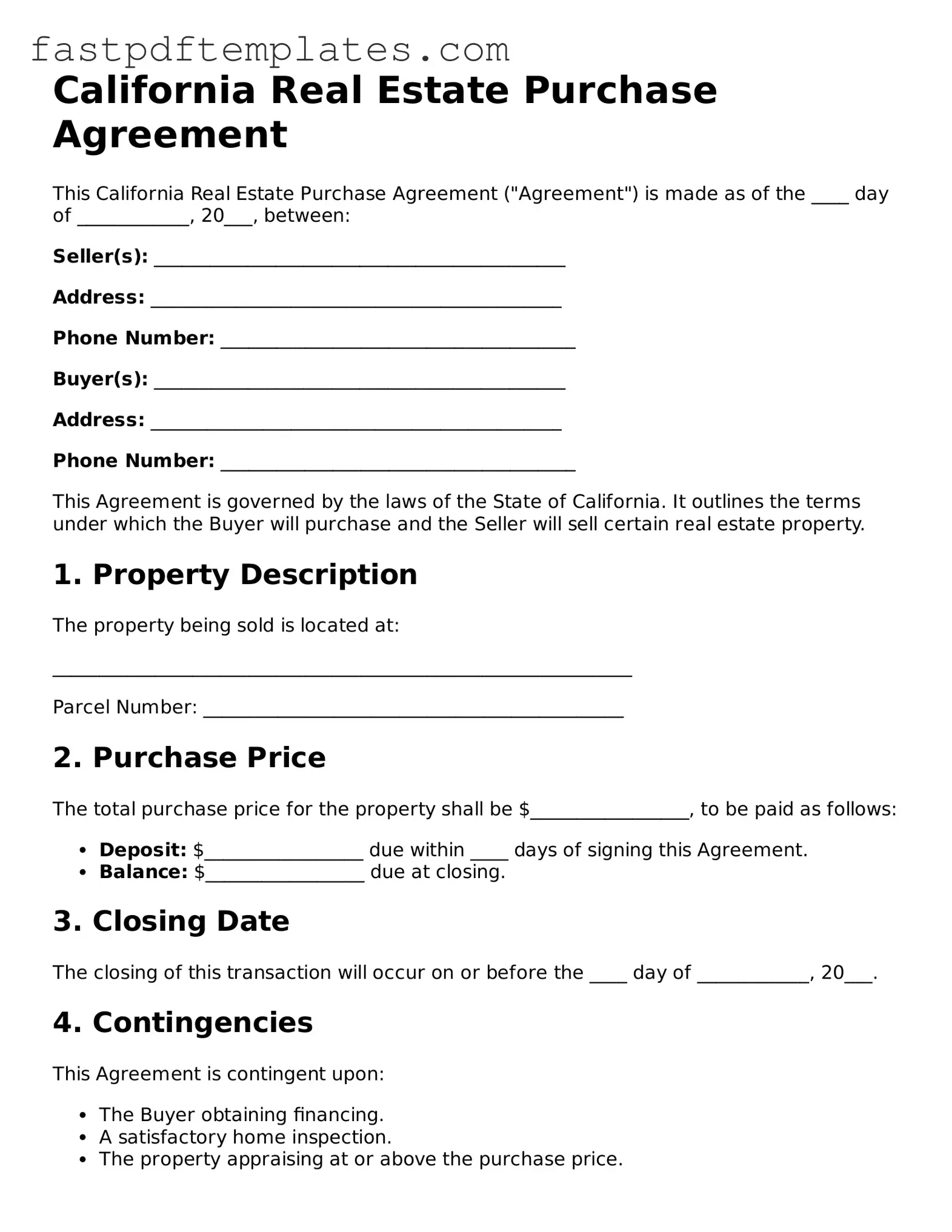California Real Estate Purchase Agreement
This California Real Estate Purchase Agreement ("Agreement") is made as of the ____ day of ____________, 20___, between:
Seller(s): ____________________________________________
Address: ____________________________________________
Phone Number: ______________________________________
Buyer(s): ____________________________________________
Address: ____________________________________________
Phone Number: ______________________________________
This Agreement is governed by the laws of the State of California. It outlines the terms under which the Buyer will purchase and the Seller will sell certain real estate property.
1. Property Description
The property being sold is located at:
______________________________________________________________
Parcel Number: _____________________________________________
2. Purchase Price
The total purchase price for the property shall be $_________________, to be paid as follows:
- Deposit: $_________________ due within ____ days of signing this Agreement.
- Balance: $_________________ due at closing.
3. Closing Date
The closing of this transaction will occur on or before the ____ day of ____________, 20___.
4. Contingencies
This Agreement is contingent upon:
- The Buyer obtaining financing.
- A satisfactory home inspection.
- The property appraising at or above the purchase price.
5. Seller Disclosures
The Seller agrees to provide any required disclosures, including but not limited to:
- Natural hazards disclosure.
- Mold and pest disclosures.
- Lead-based paint disclosure (if applicable).
6. Additional Terms
The following additional terms are agreed upon:
______________________________________________________________
______________________________________________________________
7. Signatures
By signing below, both parties agree to the terms set forth in this Agreement.
Seller Signature: ___________________________ Date: _____________
Buyer Signature: ___________________________ Date: _____________
This document serves as a binding contract between the Buyer and Seller, and both parties are encouraged to seek legal advice to fully understand the terms of this Agreement.
